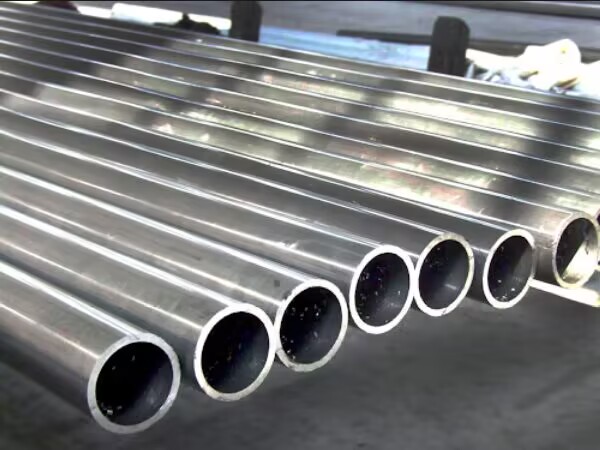Principle and application of heat treatment of seamless steel pipe

The heat treatment technology of
seamless steel pipe is to change the internal structure of steel by controlling the process of heating, insulation and cooling to achieve the effect of enhancing its mechanical properties. Including annealing, normalizing, quenching, tempering these four heat treatment methods, through different heat treatment processes to obtain the mechanical properties of seamless steel pipes are different. The following is a brief introduction to the heat treatment process of seamless steel pipes.
anneal
Annealing is to slowly heat the seamless steel pipe to a certain temperature, and control the speed of cooling after a period of time, which can generally be divided into complete annealing and incomplete annealing.
Objective: Annealing treatment can adjust the internal structure of seamless steel pipe, eliminate defects, reduce the hardness of seamless steel pipe, so as to improve the subsequent processing performance and facilitate cutting. It can also eliminate the residual stress in the pipe and reduce the deformation and cracking of the steel pipe.
Application: It is suitable for seamless steel pipes that need to reduce hardness and improve plasticity and toughness.
normalizing
Normalizing is to heat the seamless steel pipe to the austenitic critical temperature of 30~50 ° C (between 727 ° C and 912 ° C), and then hold it for a period of time before taking it out of the furnace and placing it in the air for natural cooling.
Objective: After normalizing, the internal structure of the steel pipe can be refined, the carbide distribution can be more uniform, and the mechanical properties and toughness can be improved. After normalizing, the hardness of the low-carbon seamless steel pipe is slightly higher than that of the annealed state, and the normalizing treatment effect of medium carbon steel is closer to the tempering treatment, which can improve the hardness and cutting performance of the steel pipe.
Application: Suitable for medium and low carbon seamless steel pipe, as well as the need for high hardness and high toughness occasions.
quench
Quenching is to heat the seamless steel pipe to the austenitic temperature (AC3 or AC1 or more), so that its organization becomes austenite, and quickly cools to the martensite or bainite transition temperature below, forming a brittle and hard organizational structure.
Objective: After quenching, the hardness of the steel pipe is significantly improved, and its wear resistance and rigidity are also enhanced. Improves its mechanical properties.
Application: Mainly used in the need of high hardness and high wear resistance.
temper
Tempering refers to the process of heating the seamless steel pipe to a specific range below the critical temperature after quenching, and cooling in air, water, and oil after holding it for a period of time.
Objective: The main purpose of tempering is to eliminate the internal stress caused by quenching, reduce the strength and hardness of the steel pipe, improve the toughness of the steel pipe, and prevent its brittleness. In addition, tempering can also stabilize the internal organization of the steel pipe, making the steel pipe more stable during use.
Tempering: The treatment of high temperature tempering after quenching of seamless steel pipe is called tempering treatment, which is a double heat treatment of seamless steel pipe to achieve the purpose of good mechanical properties of seamless steel pipe.
In summary:
Through the four main heat treatment processes of annealing, normalizing, quenching, tempering and tempering treatment, the hardness, strength, toughness, wear resistance and machining performance of seamless steel pipes can be adjusted to meet different application needs.
